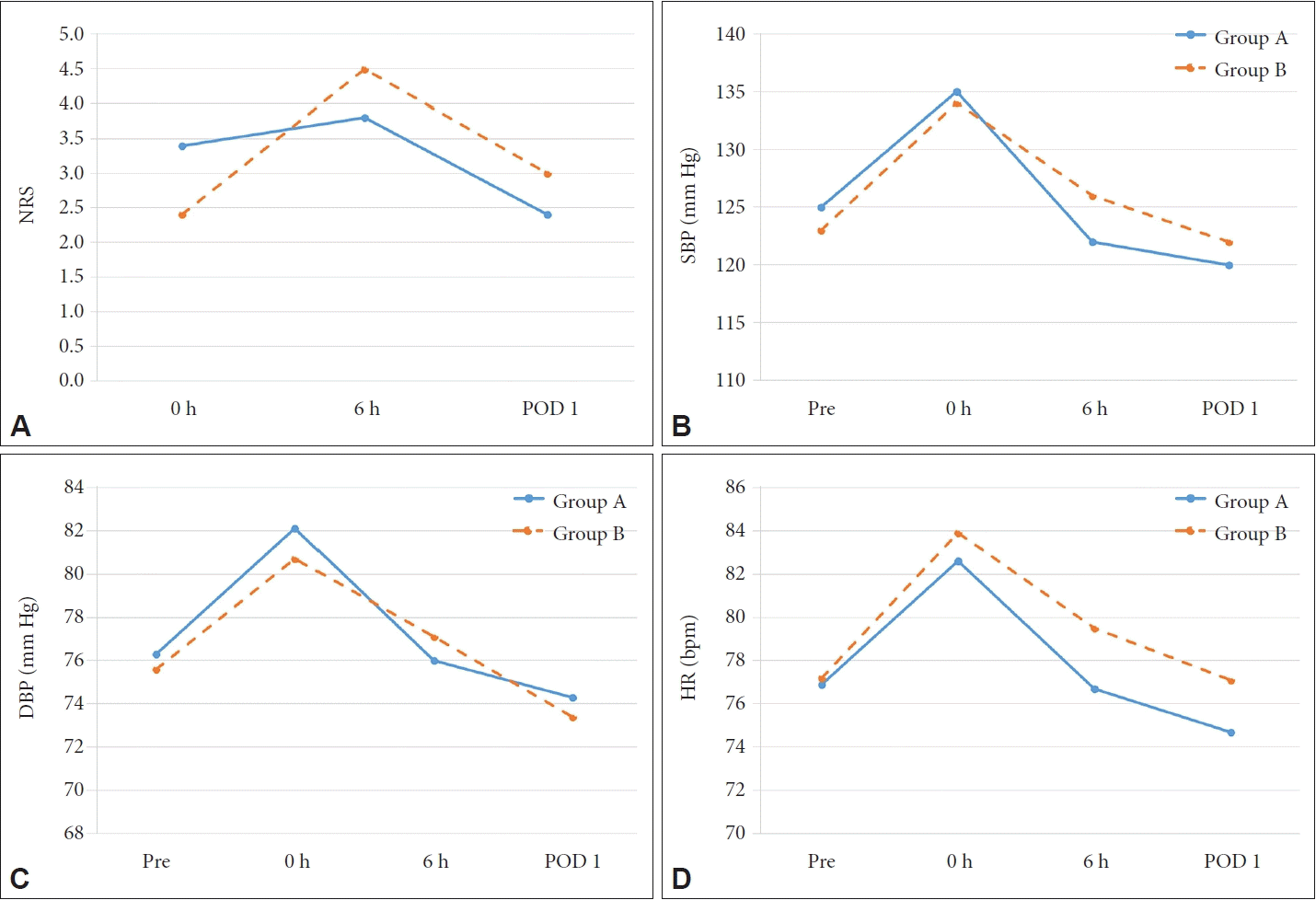1. Ardehali MM, Bastaninejad S. Use of nasal packs and intranasal septal splints following septoplasty. Int J Oral Maxillofac Surg. 2009; 38(10):1022–4.

2. Kim JS, Kwon SH. Is nonabsorbable nasal packing after septoplasty essential? A meta-analysis. Laryngoscope. 2017; 127(5):1026–31.

3. Dadgarnia M, Meybodian M, Karbasi A, Baradaranfar M, Atighechi S, Zand V, et al. Comparing nasal packing with trans-septal suturing following septoplasty: a randomized clinical trial. Eur Arch Otorhinolaryngol. 2017; 274(9):3513–8.

4. Yadav K, Ojha T, Gakhar S, Sharma A, Singhal A, Kataria V. Effectiveness of nasal packing in trans-septal suturing technique in septoplasty: a randomized comparative study. Indian J Otolaryngol Head Neck Surg. 2019; 71(Suppl 3):1765–9.

5. Mane RS, Patil B, Mohite A. Comparison of septoplasty with and without nasal packing and review of literature. Indian J Otolaryngol Head Neck Surg. 2013; 65(Suppl 2):406–8.

6. Bernardo MT, Alves S, Lima NB, Helena D, Condé A. Septoplasty with or without postoperative nasal packing? Prospective study. Braz J Otorhinolaryngol. 2013; 79(4):471–4.

7. Certal V, Silva H, Santos T, Correia A, Carvalho C. Trans-septal suturing technique in septoplasty: a systematic review and meta-analysis. Rhinology. 2012; 50(3):236–45.

8. Yilmaz MS, Guven M, Elicora SS, Kaymaz R. An evaluation of biodegradable synthetic polyurethane foam in patients following septoplasty: a prospective randomized trial. Otolaryngol Head Neck Surg. 2013; 148(1):140–4.
9. Stevens RW. Nasal packing; the rubber pneumatic pack. AMA Arch Otolaryngol. 1951; 54(2):191–4.

10. von Schoenberg M, Robinson P, Ryan R. Nasal packing after routine nasal surgery--is it justified? J Laryngol Otol. 1993; 107(10):902–5.

11. Samad I, Stevens HE, Maloney A. The efficacy of nasal septal surgery. J Otolaryngol. 1992; 21(2):88–91.
12. Fairbanks DN. Complications of nasal packing. Otolaryngol Head Neck Surg. 1986; 94(3):412–5.

13. Kim YS, Kim YH, Kim NH, Kim SH, Kim KR, Kim KS. A prospective, randomized, single-blinded controlled trial on biodegradable synthetic polyurethane foam as a packing material after septoplasty. Am J Rhinol Allergy. 2011; 25(2):e77–9.

14. Naclerio RM, Bachert C, Baraniuk JN. Pathophysiology of nasal congestion. Int J Gen Med. 2010; 3:47–57.

15. Alexabnder JL, Hill RG. Postperative pain control. Hoboken, NJ: Blackwell Scientific Publishing;1987.
16. Ocalan R, Akin C, Disli ZK, Kilinc T, Ozlugedik S. Preoperative anxiety and postoperative pain in patients undergoing septoplasty. B-ENT. 2015; 11(1):19–23.
17. Ploghaus A, Narain C, Beckmann CF, Clare S, Bantick S, Wise R, et al. Exacerbation of pain by anxiety is associated with activity in a hippocampal network. J Neurosci. 2001; 21(24):9896–903.

18. Kayabasi S, Cayir S, Hizli O. The effects of intraday operation time on pain and anxiety of patients undergoing septoplasty. Braz J Otorhinolaryngol. 2021; 87(3):310–4.

19. Gadkaree SK, Shaye DA, Occhiogrosso J, Lee LN. Association between pain and patient satisfaction after rhinoplasty. JAMA Facial Plast Surg. 2019; 21(6):475–9.

20. Williams HL. The clinical physiology and pathology of the nasal airways and of their adjoining air-filled cavities. Ann Otol Rhinol Laryngol. 1970; 79(3):513–8.

21. Massumi RA, Sarin RK, Pooya M, Reichelderfer TR, Fraga JR, Rios JC, et al. Tonsillar hypertrophy, airway obstruction, alveolar hypoventilation, and cor pulmonale in twin brothers. Dis Chest. 1969; 55(2):110–4.

22. Cook TA, Komorn RM. Statistical analysis of the alterations of blood gases produced by nasal packing. Laryngoscope. 1973; 83(11):1802–9.

23. Yildirim A, Yasar M, Bebek AI, Canbay E, Kunt T. Nasal septal suture technique versus nasal packing after septoplasty. Am J Rhinol. 2005; 19(6):599–602.

24. Gal TJ, Cooperman LH. Hypertension in the immediate postoperative period. Br J Anaesth. 1975; 47(1):70–4.

25. Taheri A, Farahani MM, Saeedi M, Banaei-Boroujeni S, Khosravi MH, Hosseini SM. Comparing cardiac complications of bilateral nasal packing versus bilateral packing with airway after septoplasty; a randomized clinical trial. J Biochem Tech. 2019; 2:95–9.
26. Zayyan E, Bajin MD, Aytemir K, Yılmaz T. The effects on cardiac functions and arterial blood gases of totally occluding nasal packs and nasal packs with airway. Laryngoscope. 2010; 120(11):2325–30.

27. Baxandall ML, Thorn JL. The nasocardiac reflex. Anaesthesia. 1988; 43(6):480–1.

28. Betlejewski S, Betlejewski A, Burduk D, Owczarek A. [Nasal-cardiac reflex]. Otolaryngol Pol. 2003; 57(5):613–8. Polish.
29. Haldar R, Kaur J, Bajwa SJ. Nasocardiac reflex during aspiration and injection through a nasogastric tube: an infrequent occurrence. Indian J Crit Care Med. 2015; 19(4):237–9.

30. Banglawala SM, Gill M, Sommer DD, Psaltis A, Schlosser R, Gupta M. Is nasal packing necessary after septoplasty? A meta-analysis. Int Forum Allergy Rhinol. 2013; 3(5):418–24.






 PDF
PDF Citation
Citation Print
Print



 XML Download
XML Download